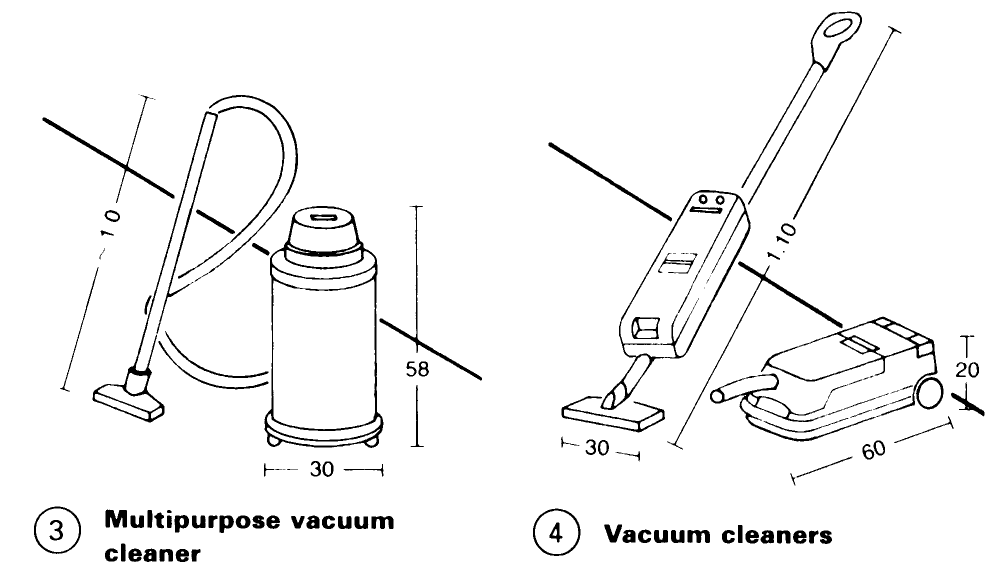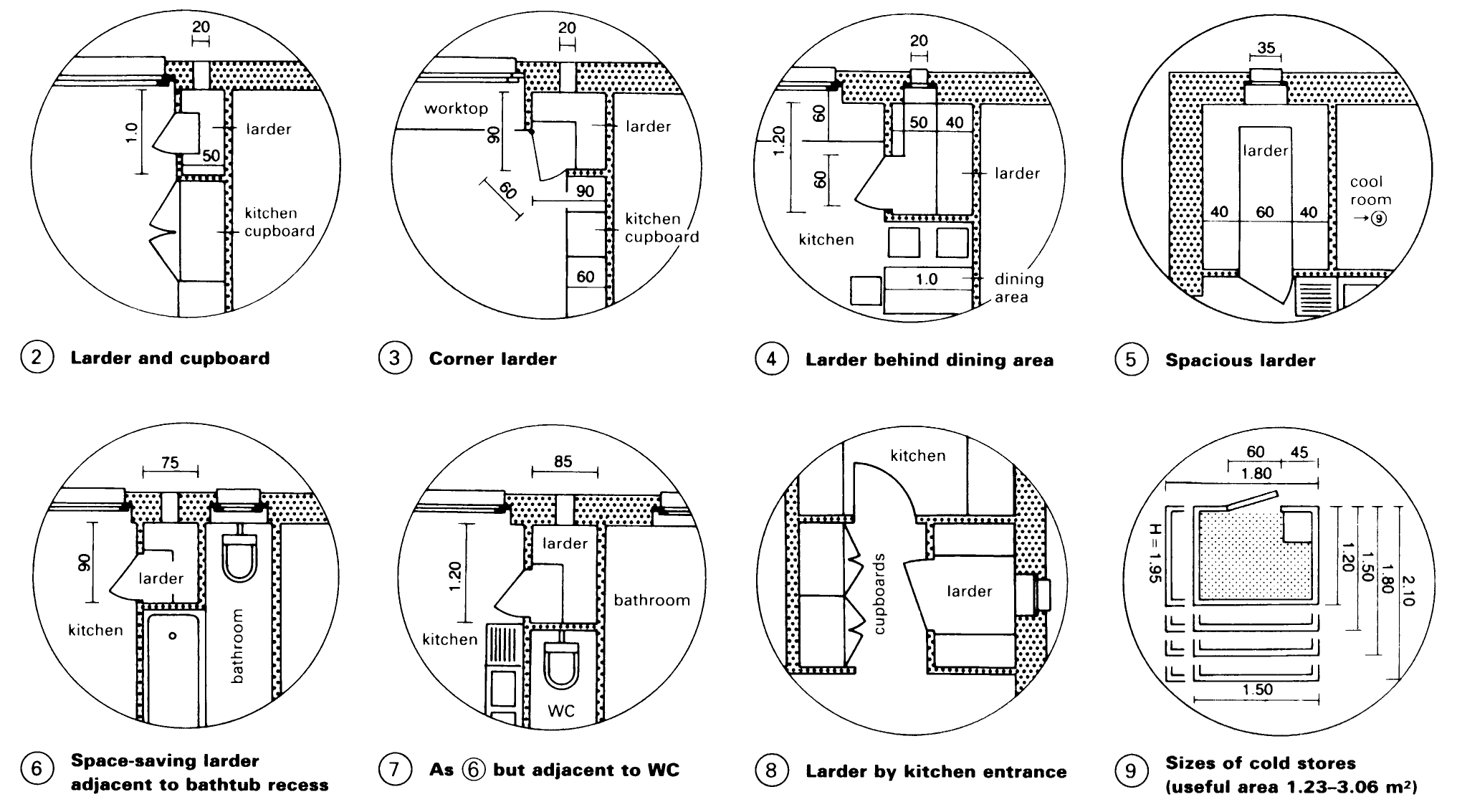Storage Space. Utility Rooms. Pantries, Larders
Corners behind doors and spaces under stairs and sloping roofs can all be used to provide storage space.
The easiest space to exploit is under the staircase, where there is often room for large sliding cupboards (6) or even a work space (8).

Where cupboards are built into spaces under roof slopes it is important to ensure good insulation must be provided behind the units. Such cupboards should also have air holes at the top and bottom, or have louvre doors (13) – (15), so that there is constant ventilation.

Utility Rooms. In utility rooms there must be adequate cupboard space for storing cleaning materials and equipment, tools and ladders – (1) - (6). Each cupboard should, if possible, be no less than 60cm wide.



In some circumstances, and particularly in multistorey housing units, chutes made of stainless steel or galvanised steel sheet can be used for discharging household waste or collecting laundry (11) – (13). They will require a ventilation shaft with a cross-sectional area of 30-35% of the waste chute. For safety, chute insertion points can have electrical doors so that only one load at a time can be dropped.


Linen chutes are most likely to be worth considering in houses on sloping sites with utility rooms in the basement.
Household waste should ideally be collected and transported in portable containers (13) + (15), the dimensions of which need to be taken into account when planning the standing and movement areas required. These intermediate waste containers are made of steel sheet or polyethylene and have capacities up to 110m3 (11001). More common household dustbins of polyethylene or galvanised sheet steel are free-standing and have no wheels – (14). They range from 50 to 110 I capacity and can be contained in a purpose- built outhouse - (9).


The best position for utility rooms is facing north. They should ideally be near the side or rear door and be adjacent to or accessible from the kitchen (7) – (10).

Utility rooms are used for a variety of purposes, including storage, laundry and ironing, sewing and possibly also for hobby activities. To be of real value, the length available for standing space or work surface should be a minimum of 3.80 m (preferably 4.60 m) – (2).

The arrangement of the equipment should allow safe and convenient use: for example, an ironing board when used standing needs to be at a different height than when seated – (12) – (13).

Pantries, Larders. When planning houses or flats, space should be allocated for rooms such as larders, pantries or cold stores. The most practical solution is to have a larder in or beside the kitchen (2) – (8). It must be cool, well-ventilated and shaded from the sun. Connections for a freezer unit and a drinks cooler should also be provided if the larder is of sufficient size and storage shelves are best arranged right up to the ceiling.
In very large households, there may be a need for a cold store. These are supplied in modular form in a range of sizes – (9) and include separate cooling and freezer sections.

Date added: 2023-01-05; views: 625;
